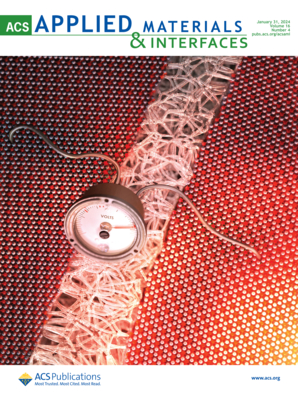Atomic Defect-Directed Epitaxial Growth of Multimetallic Nanorods for High-Efficiency Alcohol Electro-Oxidation
IF 8.3
2区 材料科学
Q1 MATERIALS SCIENCE, MULTIDISCIPLINARY
引用次数: 0
Abstract
Site-selective epitaxial growth of metals onto shaped nanoparticles represents a versatile strategy for tailoring nanostructures to optimize the optical and catalytic properties. In this study, we systematically elucidate the critical factors governing the epitaxial growth of silver and platinum atoms onto gold nanorods (Au NRs), revealing that atomic defects on the Au NR surface dictate the deposition sites of Ag and Pt. By precisely modulating epitaxial growth conditions and density of surface atomic defects, we achieve the synthesis of dumbbell-shaped (DS) and thorny-shell (TS) structured Au-AgPt NRs. Notably, the DS-Au-AgPt0.24 NR catalyst demonstrated exceptional catalytic performance in alcohol fuel cell reactions, driven by their abundant atomic defects and strong strain effects localized at the crown structure. For ethylene glycol electro-oxidation, these DS-Au-AgPt0.24 NRs achieved a mass activity of 23.5 A mgPt–1 and a specific activity of 156.9 mA cm–2, which were 4.1 and 11.2 times higher than that of commercial platinum–carbon (Pt/C) catalysts (5.7 A mgPt–1 and 14.0 mA cm–2), respectively. Our findings not only advance the mechanistic understanding of defect-mediated epitaxial growth in multimetallic systems but also provide a blueprint for designing high-performance catalysts through atomic-scale structural engineering.

求助全文
约1分钟内获得全文
求助全文
来源期刊

ACS Applied Materials & Interfaces
工程技术-材料科学:综合
CiteScore
16.00
自引率
6.30%
发文量
4978
审稿时长
1.8 months
期刊介绍:
ACS Applied Materials & Interfaces is a leading interdisciplinary journal that brings together chemists, engineers, physicists, and biologists to explore the development and utilization of newly-discovered materials and interfacial processes for specific applications. Our journal has experienced remarkable growth since its establishment in 2009, both in terms of the number of articles published and the impact of the research showcased. We are proud to foster a truly global community, with the majority of published articles originating from outside the United States, reflecting the rapid growth of applied research worldwide.
 求助内容:
求助内容: 应助结果提醒方式:
应助结果提醒方式:


